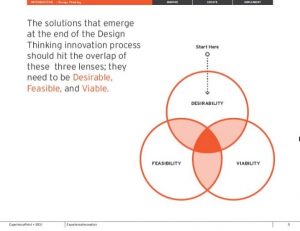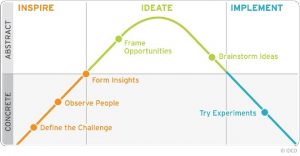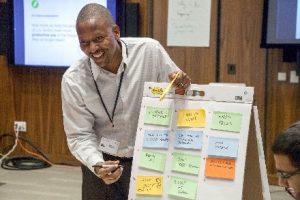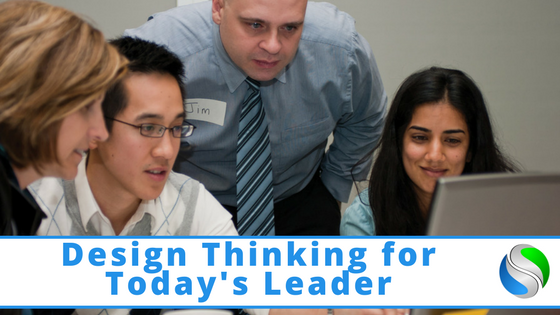 In today’s fast-paced and ever-changing world leaders are faced with new and complex challenges. It is no longer easy to predict changes while the needs of our stakeholders continue to change drastically. Our organizations, which at one time provided great stability by their mere size and complexity, now often get in the way of designing fast-paced strategies for creating a competitive edge. The norm of gathering customer intelligence by way of focus groups and surveys no longer provides those important bits of information that help us design services for immediately addressing the needs of our students, employees, or community members. Our new reality calls for a new approach, a new tool, and most importantly, a new mindset.
In today’s fast-paced and ever-changing world leaders are faced with new and complex challenges. It is no longer easy to predict changes while the needs of our stakeholders continue to change drastically. Our organizations, which at one time provided great stability by their mere size and complexity, now often get in the way of designing fast-paced strategies for creating a competitive edge. The norm of gathering customer intelligence by way of focus groups and surveys no longer provides those important bits of information that help us design services for immediately addressing the needs of our students, employees, or community members. Our new reality calls for a new approach, a new tool, and most importantly, a new mindset.
Innovative organizations across our world create some of the most amazing products and human experiences. Not only do their new products become the latest trend or a needed element in our lives, they also have a magical way of creating a customer experience which is unique and addresses the immediate needs of the customer, even before the customer can articulate the need. One may ask, How does an organization actually embrace such a culture? The approach is simple; think like a designer!
Design Thinking is an approach to innovation, which is human-centered and cultivates ideas into tangible strategies.
Tim Brown, CEO of IDEO (International Design/Innovation Company), elegantly defines Design Thinking in his Harvard Business Review article (06/2008), “Put simply, design thinking is a discipline that uses the designer’s sensibility and methods to match people’s needs with what is technologically feasible and what a viable business strategy can convert into customer’s value and marketing opportunity.”
Organizations such as Starbucks, Apple, Southwest Airlines, and Google are examples of companies that display such an inviting, dynamic innovative presentation of their purpose that customers are eagerly attracted to an engagement with them.
DESIGN THINKING MODEL
There are three basic elements to Design Thinking beginning with viewing the challenge or situation through three distinct lenses of desirability, feasibility, and viability.
Every challenge or opportunity starts with the people for whom we are designing a solution; we begin with the person we serve!
We uncover our client’s needs, aspirations, and behaviors through dialogue and through formal and informal observation. These data create the framework of the desirability lens.
Once we have gathered enough details of the scope of what the client/customer can define as desirable, we move onto the feasibility lens. Feasibility consists of defining what is organizationally and technically easily possible. From a designer perspective, creating solutions which cannot be supported or sustained are short-lived and often expensive.
The third and final lens is that of viability; can it be sustained financially so that it has a life of its own? These last two phases are to be carefully proposed and inserted into the design thinking model to create an environment of breakthrough and innovation.
It is important to think about our experiences as leaders with vision. How often do we engage in brainstorming ideas and excite our teams only to find out the ideas are not feasible or viable? How often have we worked on teams where the solution has been pre-determined without fully understanding the aspirations and behaviors of our clients? It can happen that attractive ideas can prompt unrealistic desires that seem innovative and creative at first blush but are not practical. It is optimal to work with a common framework of design thinking.
 These three lenses provide data which are then applied to the Design thinking Innovation Process. Before we discuss the elements of the innovation process, we need to address a common question: Is this process linear? The answer is a resounding no. The elements of the innovation process are discussed in a linear format yet the process is quite agile and organizations, which have embraced a culture of innovation, move back and forth between the elements that often have been described as “focused chaos” (Experience Point, 2016).
These three lenses provide data which are then applied to the Design thinking Innovation Process. Before we discuss the elements of the innovation process, we need to address a common question: Is this process linear? The answer is a resounding no. The elements of the innovation process are discussed in a linear format yet the process is quite agile and organizations, which have embraced a culture of innovation, move back and forth between the elements that often have been described as “focused chaos” (Experience Point, 2016).
Design Thinking Process
Design thinking is built on a deliberate process to inspire, ideate, and implement.
Inspire
 The first phase of innovation begins with clearly defining the challenge. This is not simply stating a problem but phrasing the challenge in a tangibly human way while embedding a sense of possibility.
The first phase of innovation begins with clearly defining the challenge. This is not simply stating a problem but phrasing the challenge in a tangibly human way while embedding a sense of possibility.
All of us have dealt with workplace challenges which sound something like, “We want to expand the number of services which can better serve our students” versus a design thinking framing of an opportunity, “How might we integrate value into our student’s college experience to help them success with confidence?”
The challenge should be motivating. It should have an emotional element complimenting its rational approach. Most importantly, the challenge should resonate with the people who are being served.
During the inspiration phase you will engage in methods of quality, which will allow you to form new insights, question one’s bias and assumptions, and uncover behaviors and truths about our clients. Our insights will help us understand what motivates the people we are serving. We begin to listen with our eyes and see with our ears – a shift in mindset for many of us.
Framing the opportunity in the right way will result in more powerful and sustainable solutions.
In his book, Cracking Creativity: The Secrets of Creative Genius, Michael Micalko recalls a time at Toyota when leadership asked employees for suggestions on how employees could become more productive. The response was dismal. When the question was reframed to “How can you make your job easier?” leaders were flooded with ideas! It is all about how we reframe the opportunity.
Ideate
 Our challenge has been defined within the context of our client’s behaviors and truths. It is now time to generate ideas. Ideas should be broad enough to allow innovation and narrow enough to address the challenge.
Our challenge has been defined within the context of our client’s behaviors and truths. It is now time to generate ideas. Ideas should be broad enough to allow innovation and narrow enough to address the challenge.
A design thinking approach to generating ideas begins with the mindset of possibility. The phrase “How might we….” will launch your brain storming process.
The ideation process is one which should be frequently revisited. It is important to be playful and create an environment that sparks the imagination and to encourage drawing, storytelling, and creating models.
Some organizations create a small space within an office area designated to their innovation space for purposeful playfulness.
Implement
Design thinking embraces the practice of fast prototyping and quick, inexpensive experiments with the top innovative ideas. Our experience has taught us that many of our innovative ideas simply do not gain enough momentum to be fully implemented within an organization’s new norms.
Testing out ideas in small but fast experiments also helps us evolve the idea without necessarily proving it. Implementing is often the most difficult, since many organizations do not encourage failure or fast execution of a new idea. Testing new ideas in small but agile ways encourages redesigning your innovation before you go to market. This will save time, effort, and money.
Although this process appears to be linear, innovative leaders find themselves co-creating and collaborating with peers, clients, and other stakeholders in a give-and-take fashion.
The Innovator’s Mindset
Along with the Design Thinking process is the need to have a leader who has an Innovator’s mindset. This new approach to thinking consists of different habits that become during any formal leadership program. Innovators are
- Clear about the impact they want to have in this world
- Cognizant of how they want to influence their clients
- Committed to a passion, a purpose for changing lives
- Intuitive and listening to their gut
- Highly empathetic and connected with their clients on an emotional level
- Learning continuously – tare always on a mission to relearn new ways of approaching a situation or challenge
- Living with humility – fail often, fail fast, and learn from the failure to move forward
Design Thinking helps us rethink thinking. Once the approach is embraced and we are on the road to creating innovative cultures, we will begin to see new opportunities consistently connected with our client more deeply and design innovations which impact and influence the lives of many.
References
Brown, Tim.(2009). Change by Design: How Design Thinking Transforms Organizations and Inspires Innovation. Harper Collins Publishers. September 2009.
Brown, Tim, (2008). Definition of Design Thinking, Harvard Business Review, 06.2008.
ExperiencePoint Resources, Toronto Canada. 2016
Kelley, T., Littman, J., The Art of Innovation: Lessons in Creativity from IDEO, America’s Leading Design Firm. Random House December 2007
Michalko, Michael, Cracking Creativity: The Secrets of Creative Genius. Random House, New York, New York, 2001
Thomke,S., Feinberg, B., Design Thinking and Innovation at Apple. Harvard Business School, May 1, 2012




